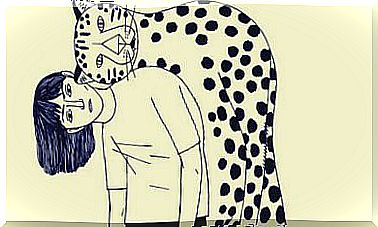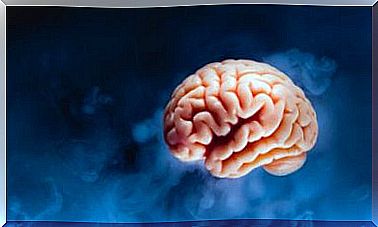Group Therapy: Characteristics And Objectives

Group therapy involves the presence of several people during therapy guided by one or more therapists. It emphasizes the interactions that occur in the group and how these relationships can benefit the individual and the group as a whole.
It is a recognized tool in the field of psychology and psychiatry. Most of the goals of group therapy are the same as those of individual therapy.
However, it is particularly suitable if one wishes to work on certain difficulties. Among these are conflict resolution, return to emotional balance, personal development and strengthening social skills.
Want to know more about this type of therapy? Do you want to know its historical origin and the advantages it can offer? We tell you more below!
What is the origin of group therapy?
According to some ancestral traditions, healing practices were done in groups. Tribal and religious leaders were indeed using the social fabric to heal and change behavior. We find this type of practice in Greek tragedies and medieval plays. This is still the case within shamanic rites
However, group therapy, in the sense of a planned therapy under the direction of a professional and the aim of which is to treat certain pathologies (in particular pathologies of the personality), is a phenomenon of the twentieth century. It was in the 1930s that the first group therapies appeared in the United States.
Its initiators are Wender, Schilder, Moreno, Slavson, Redl Wolf. Now let’s review the contribution of each of these precursors.
Remarkable pioneers in the field of group therapy
In 1936 for example, Wender worked with inpatients and combined Freudian concepts of interpreting family transfer within the group. That same year, Schelder was considered the pioneer of analytical group therapy, thanks to his interpretation of transference and his work on dreams.
In 1942, Redl introduced children’s diagnostic groups. Moreno began to work on the theme of psychodrama in the United States during the 1930s. For his part, Salvson, in 1943, began to work with groups of adolescents. The latter was interested in the expression of fantasies and feelings through action and play.
After World War II, the popularity of group therapy increased due to an increase in the demand for the therapy itself. Today it is a widely used type of therapy. Whether as such or in support of individual therapy.
What is group therapy and how many participants should it have?
Group therapy is a type of therapy in which different subjects meet to talk. They are therefore guided by one or more therapists. The size of the group should be closely related to the goal and duration of therapy. However, the ideal size is considered to be between 8 and 10 patients.
In principle, the size of the group should be small enough to give each of the participants the opportunity to speak. Thomas and Fink (1963) divided the size of groups into two categories depending on the nature of the work:
- The effects of group therapy on the group as a whole
- The effects on the behavior of its members in particular
These two authors thus observed that the productivity of the group increased with the size of this one. However, only up to a point. Indeed, when the group was too large it reduced the flexibility and effectiveness of the therapy. It also decreases the cohesion of the group and promotes the creation of sub-groups and the distribution of tasks.
Characteristics of group therapy
Group therapy has its own characteristics. Yalom offers some therapeutic factors in group therapy. He thus refers to the factors that promote therapeutic change through this format of therapy :
- First of all, the act of generating hope.
- Universality.
- Being able to provide information.
- Selflessness.
- The corrective recap on the family group of origin.
- The development of socialization techniques.
- Imitation behavior.
- Individual learning.
- Group cohesion.
- Catharsis.
- Finally, the existential factors.
The goals of group therapy and types of groups
Group therapy can be used for different purposes. Among them, we find clinical, psychoeducational, counseling or personal development objectives. Depending on these criteria, there are different types of therapeutic groups. By following these criteria, we can talk about the following types of groups (with their respective objectives).
- First of all, depending on the problem, there are therapeutic, psychoeducational, counseling or development groups.
- Depending on the population, we talk about family therapy, couples therapy, child therapy or specific pathology. For example, depression.
- According to the theoretical approach, there are psychoanalytic, psychodramatic, humanist, psychoeducational, behavioral and cognitive groups and bodywork groups.
The benefits of group therapy
Group therapy has definite advantages. It allows in particular to explore the relational style that the subject maintains with others.
The group indeed offers a real microcosm, where relationships with different types of people can be highlighted. Group therapy therefore offers a richer and more diverse context that can promote a change that individual therapy does not allow.
In addition, the patient can find support and understanding when the group is united. Thus, within the group, he can come into contact with people who have had experiences similar to his own and therefore feel better understood. Finally, it is a space that allows you to exchange points of view with others.
Would group therapy be right for me?
Not everyone has an interest in initiating a psychotherapeutic process with group therapy. It will all depend on the characteristics and needs of the patient. In this sense, there are certain issues and certain types of personalities that are particularly suited to group therapy. It can even be of great help to these people in question.
Each patient must therefore be assessed on a case-by-case basis. The benefits of this type of therapy are numerous, but so are those of individual therapy. This is why, and we insist on this point, there are people for whom this type of therapy will be more suitable than others.
Likewise, there will also be times that are more auspicious than others. In addition, some people also combine the two types of therapy simultaneously. In all cases, it is the professional who will have to advise you in this direction.










